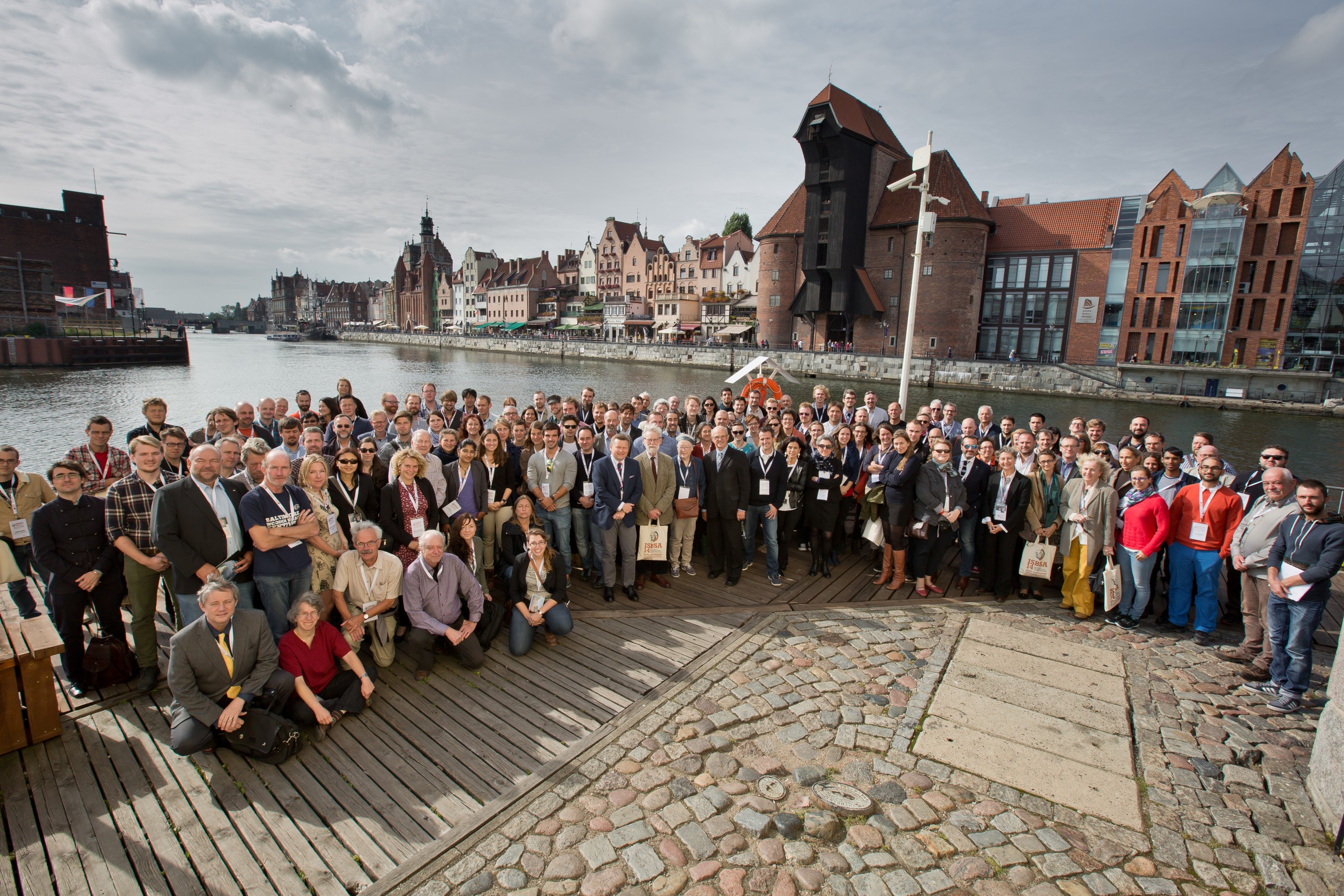The 14th International Symposium on Boat and Ship Archaeology in Gdańsk/Poland 21.-25. September 2015
Bart Holterman, 25 November 2015

Group photo in front of the medieval crane in Gdańsk made by Paweł Jóźwiak from the National Maritime Museum in Gdansk.
From September 21st until September 25th, I participated in the 14th International Symposium for Boat and Ship Archaeology (ISBSA 14) in Gdańsk, Poland. My contribution was a talk with the title: “Those bits and pieces from the Baltic shores – Evidence for medieval shipping along the German Baltic Sea coast”. Even though this topic seems to be a bit farfetched considering the topic of our project “Between the North Sea and the Norwegian Sea”, it bears an important insight into the principles of technical change in medieval and early modern shipbuilding. Moreover when dealing with the North Atlantic trade we face the problem of a lack of archaeological source material. There are several reasons for this situation. The wrecks we know today from the southern North Sea coast are found in the rivers or on land within towns. Here they are often better protected than in the open sea. Some wrecks, foremost in the Netherlands, were found in the Wadden Sea but this is quite rare and requires a certain level of sediment coverage of the site to protect the wreck from wood-degrading microorganisms. Therefore it is not easy to find wooden wrecks in the North Sea. Moreover, the conditions for archaeological documentation are difficult due to weather, tides and swell in the rather unprotected sea. At the destinations of trade in the North Atlantic, ship archaeology is in a very early stage, especially in Iceland. As a consequence we depend on material evidence from for example the Baltic Sea to construct a model of development in shipbuilding that might have influenced the North Atlantic trade of the merchants from Hamburg and Bremen.
The presentation at ISBSA 14 focused on development processes in medieval shipbuilding, which was based on tradition handed over from one generation to the next without the use of written documents, drawings or formulas. An important aspect of the examination was the possibility of changes in shipbuilding by technical transfer between different building methods, in particular between native and introduced methods. Due to the fact that only a very limited number of medieval ship finds along the German Baltic coast are properly documented, this study was mainly based on re-used ship timbers and fragments found in town excavations. Still these bits and pieces give enough technical data for comparative analyses.
The result of this research confirms that shipbuilding methods did not just change without reason. Similarly, technical transfer did not just take place because of the presence of ships built with a different method in the same waters. In fact, technical transfer seems to have been the last choice for changes within traditional building techniques in the medieval period. Changes appear to be alterations within traditional knowledge. The main reasons for changes are economical and aim for greater shipping capacities and rationalisation or simplification of the building process.
What does this mean for the project? Towards the end of the medieval period, the building of ships with flush outer planking appeared in northern Europe. It often has been assumed that the knowledge to build ships in this fashion was simply copied from foreign ships. Instead, the archaeological evidence points towards a development or self-invention of flush-planked carvel-built vessels from within the building traditions of the clinker or Kollerup-Bremen Type building methods. Could these changes, that took place in the second half of the 15th century, have been decisive for the German merchants’ choice to sail the North Atlantic to trade?
The results will be published in the Symposiums proceedings.
Posted in: Reports